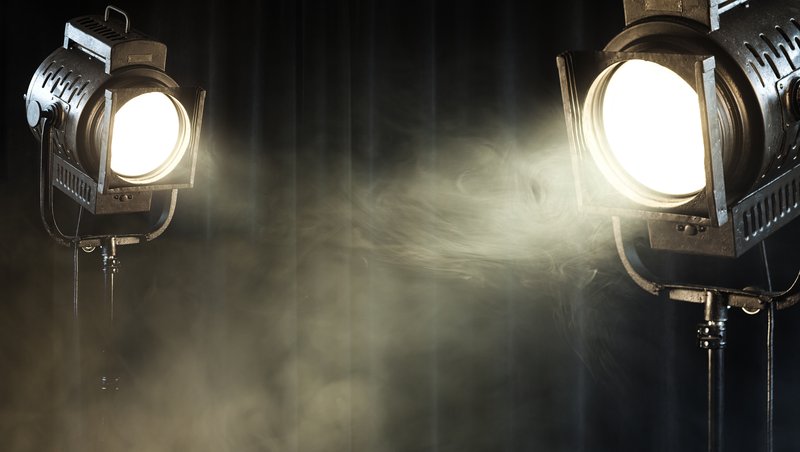Cultural activities on the stage, Slovenia, 2018
In 2018, cultural institutions prepared on their stages about 25,000 performances, on average 69 per day
In 2018, cultural homes, theatres, music institutions prepared 25,109 performances, which were attended by 4.7 million visitors.
Almost a third of all events are staged in theatres
In 2018, cultural institutions performed 25,109 events (premieres and repeats) on their stages (about 14% more than in 2017): 46.1% of the events were the result of their own production and co-production, while the remaining 53.9% were hosted events. Most (74.1%) of the events were performed in cultural centers, 24.7% in theatres and both operas, whereas music institutions, which mostly had their own performances elsewhere, produced the remaining 1.2% of all events.
The largest number of events (28.4%) were theatrical performances (i.e. drama and other theatre works, puppet and experimental theatre performances), followed by film and video productions (24.6%), music related events (23.1% - among these choral and vocal music was at the top, followed by symphonic and chamber music, folklore, modern dance, rock and urban music, etc.), lectures and round tables (5.4%), museums and other exhibitions of visual art (5.3%).
Tours made outside the headquarters of their cultural institutions (including those without own floor area for performances) were the most frequent in Slovenia (83.6% or 6,416 events), 984 were hosted throughout the European Union and 275 outside the EU. According to the type of institution (cultural centre, theatre and opera or musical institution), tours made outside their headquarters were mostly held by theatres and operas (45.0%), followed by cultural homes (39.5%) and music institutions (15.5%).
Almost 4.7 million visitors
All performances were attended by 4,668,437 visitors (in 2017: 4,358,382), thus each event was attended on average by 186 visitors (in 2017: 198 visitors).
A detailed overview of performances by type of performances – the set includes 22 different types of performances and the category "other" – showed for 2018 the following:
- of all events, the largest number were film and video projections (24.6%), followed by drama and other theatrical works (17.5%) and by puppet performances (8.9%), while the fewest were events of intermedia art (0.5%);
- among the events of own production and co-production, the largest number were drama and other theatrical works (21.2%) followed by puppet performances (12.7%), and film and video projections (11.7%), while the fewest were museum and other exhibitions (0.4%);
- among the performances on tours of other institutions, the most numerous were film and video screenings (35.7%), followed by drama and other theatrical works (14.4%) and by puppet performances (5.7%), while the fewest were again events of intermedia art (0.1%);
- the most visitors attended drama and other theatrical works (around 947,000) and the fewest attended events of intermedia art (about 17,000).
If we count the number of visitors per performance and by type, we get the following picture: by far the highest number of visitors was at museum and other exhibitions (an average of 1,977 visitors per exhibition), among music events on average the highest number of visitors was at ballet performances (501 visitor), only slightly smaller was attendance at operas and musicals (481 visitors), at visual exhibitions (453), followed by ethno music and music of the world (374), etc.; the fewest, on average 42 visitors, attended literary evenings and evenings of poetry.
Some cultural institutions offered also free-of-charge events to visitors, namely 19% or 4,753 in 2018 (in 2017: 22% or 4,837 performances). With paid events, however, the institutions earned around EUR 16.5 million; the price for a performance’s ticket cost on average EUR 9.
Festivals
In 2018, just as in 2017, cultural institutions organized 241 festivals, which featured 5,039 events (in 2017: 4,466). The majority of them were music and dance festivals (48%), 15% were theatre festivals and 10% film festivals, while the remaining 27% of festivals – which presented 49% of all festival performances – were classified by cultural institutions as "other". Cultural centres prepared the majority of festivals (192).
Educational program and other activities
In 2018, the cultural institutions prepared 6,550 educational events, seminars, workshops, etc. (in 2017: 5,676). More than 543.000 people attended these activities (in 2017: 490,000), of which 74.5% were children and youth. In the offered educational program, the majority of programs were on the topic of art and museum activities (34.3%).
Besides educational activities, the cultural institutions held also a congress or similar activity in 2018 (21 institutions), had a book and art shop (33), could publish their own publications (29), had a restaurant or snack bar (22), offered the premises for rent (70), and performed also other activities (33).
Staff in cultural institutions
In 2018, these institutions employed 2,673 persons (in 2017: 2,466) and there were 13,465 external associates as well (in 2017: 11,540). 16% of all persons employed were aged under 35 and most of them (95%) were full-time employees. Among external associates the largest share were voluntary, unpaid workers (26.9%), followed by associates with copyright contracts (24.7%), the self-employed in culture (18.0%), students (14.6%), etc. In comparison with the 2017 data, the situation in 2018 remained roughly the same.
Access for the physically, visually and hearing impaired
Among the cultural institutions that had their own premises for performing cultural activities, 55% had access arranged for physically impaired persons, and 33% had it partly arranged. The access of visually and hearing impaired persons was arranged only in 13% of these institutions, and partly arranged in 28%; these persons were completely ignored in the remaining 59% of cultural institutions.
Financing of museums and galleries
The breakdown of revenues in museums and galleries – in total EUR 142.7 million in 2018 – was: 75.6% from public resources, 22.0% from own resources from cultural and other activities, and 2.4% from sponsors from Slovenia and other countries. As regards public resources, cultural institutions received most revenues from the state budget (54.0% of total revenues).
The total cost of these cultural institutions amounted to EUR 142.6 million for 2018. Institutions spent 51.5% of the costs as labour costs and 13.3% for external associates; 28.9% of the total costs was spent on performing cultural activities, 2.3% on investments and the remaining 4.1% on operating expenses related to performing cultural activities.
Performances, attendance productions, Slovenia
Some totals do not add up due to rounding. Source: SURS |
Tours of own performances, Slovenia
Some totals do not add up due to rounding. Source: SURS |
Festivals and performances, Slovenia
Some totals do not add up due to rounding. Source: SURS | ||||||||||||||||||||||||||||||||||||||||||||||||
Employees and external associates, Slovenia
Some totals do not add up due to rounding. Source: SURS |
Revenues and expenditures of museums and galleries (EUR), Slovenia
Some totals do not add up due to rounding. Source: SURS |

.jpg)


